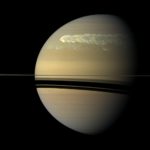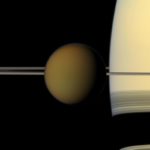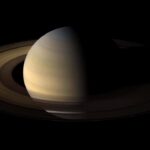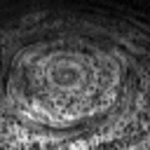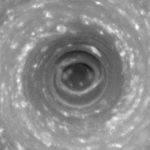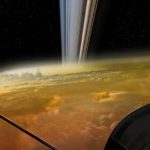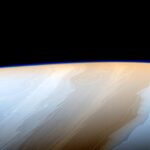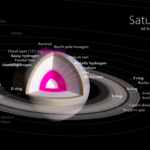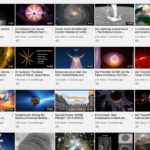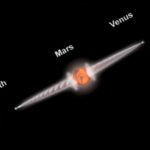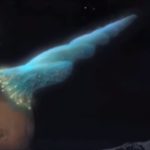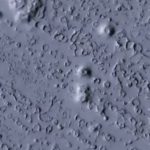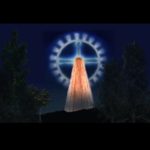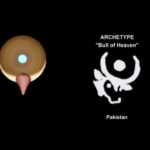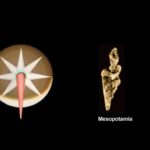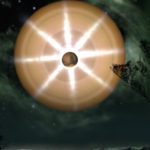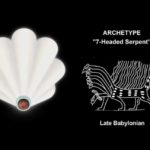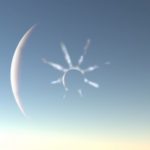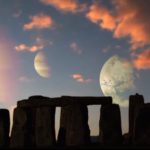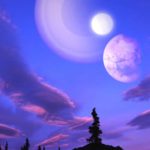Home of the largest planetary ring-system in the Sun solar-system, this world also happens to have signs of (at least those massive rings) being man-made… or ancient-angels-made.
–
Table of Contents:
- Spec’s
- Moons
- History
- Far Orbit
- Low Orbit
- Comparisons and Info
- Sky Views When the Worlds Were Closer
–
Planet Info:
| Designations | |||||||||||||
|---|---|---|---|---|---|---|---|---|---|---|---|---|---|
| Pronunciation | /ˈsætərn/ ( |
||||||||||||
|
Named after
|
Saturn | ||||||||||||
| Adjectives | Saturnian, Cronian | ||||||||||||
| Orbital characteristics[2] | |||||||||||||
| Epoch J2000.0 | |||||||||||||
| Aphelion | 1,514.50 million km (10.1238 AU) | ||||||||||||
| Perihelion | 1,352.55 million km (9.0412 AU) | ||||||||||||
| 1,433.53 million km (9.5826 AU) | |||||||||||||
| Eccentricity | 0.0565 | ||||||||||||
|
|||||||||||||
| 378.09 days | |||||||||||||
|
Average orbital speed
|
9.68 km/s (6.01 mi/s) | ||||||||||||
| 317.020°[4] | |||||||||||||
| Inclination | |||||||||||||
| 113.665° | |||||||||||||
| 339.392°[4] | |||||||||||||
| Known satellites | 62 with formal designations; innumerable additional moonlets.[2] | ||||||||||||
| Physical characteristics[2] | |||||||||||||
|
Mean radius
|
58,232 km (36,184 mi)[a] | ||||||||||||
|
Equatorial radius
|
|
||||||||||||
|
Polar radius
|
|
||||||||||||
| Flattening | 0.09796 | ||||||||||||
| Volume |
|
||||||||||||
| Mass |
|
||||||||||||
|
Mean density
|
0.687 g/cm3 (0.0248 lb/cu in)[b](less than water) | ||||||||||||
| 0.210 I/MR2 estimate | |||||||||||||
| 35.5 km/s (22.1 mi/s)[a] | |||||||||||||
|
Sidereal rotation period
|
10.55 hours[7] (10 hr 33 min) |
||||||||||||
|
Equatorial rotation velocity
|
9.87 km/s (6.13 mi/s; 35,500 km/h)[a] | ||||||||||||
| 26.73° (to orbit) | |||||||||||||
|
North pole right ascension
|
40.589°; 2h 42m 21s | ||||||||||||
|
North pole declination
|
83.537° | ||||||||||||
| Albedo | |||||||||||||
|
|||||||||||||
| −0.55[10] to +1.17[10] | |||||||||||||
| 14.5″ to 20.1″ (excludes rings) | |||||||||||||
| Atmosphere[2] | |||||||||||||
|
Surface pressure
|
140 kPa[11] | ||||||||||||
| 59.5 km (37.0 mi) | |||||||||||||
| Composition by volume | by volume:
Ices:
|
||||||||||||
Further details here.
–
Saturn’s Moons:
This gas giant has 62 publicly-known moons. Details here and here. Many of them have colonies on them, some with populations in the millions. As with most of the worlds in the Sun solar-system, the Germans and their Dark Fleet are in charge.
Iapetus is a constructed, dodecahedron-based, semi-natural-looking satellite with a Death Star appearance; it has a single dominant crater and an equatorial ridge. It may function similarly to how The Moon (Earth’s satellite) does; it may loop unruly beings into reincarnation cycles whenever they cause trouble on Saturn or any of its other moons. It probably also serves as a massive orbital station and base of operations –also like Earth’s moon has for many millennia.

–

–

–
–
History:
2023 December note: Saturn didn’t eat his own children; ancients on Earth witnessed in their sky, when Saturn was much closer, moons being practice-formed from Saturn and then reabsorbed into its atmosphere, and modern humans intentionally idiotically mistranslated and mis-taught the tale/account of that.
..
Jupiter didn’t castrate Saturn; that was another intentional idiotic mistranslation by the always-evil/wrong humans. Saturn, after practice-making many moons, formed a world even bigger than it, knowing that would help shield it from cosmic debris from its experiments (by gravitationally attracting otherwise-threatening asteroids, comets, etc.), thus Saturn was no longer the biggest/dominant world / Sphere Being in the Sun system, and that was poorly expressed by primitive insecure weirdo humans as having lost its manhood/balls. It lost balls only in the sense that some of the spherical moons it made migrated away to Jupiter, or including Jupiter.
Venus was one of those moons/subordinates, thus the poorly-translated story/claim/myth that from the foam of Saturn’s castrated parts… came/arose this beautiful/glowy world.
…
2024 January note: Kronos/Cronos, where we get the word chronology, was another name for Saturn, hinting at the fact that world used to be how time was kept; before the current star we call the Sun was used/there.
–
Far Orbit:
–
Low Orbit:
–
Comparisons and Info:
–
Sky Views When the Worlds Were Closer:
* This gas-giant was once a brown-dwarf and the central star of the solar system… after it took that position from Uranus (which was the solar system’s center back during the accretion-disc times). In its warm orbit, all worlds (Venus, Earth, Mars, and others) were M-class garden planets and moons, each in an eons-long first Golden Age. There were no seasons, light was much dimmer than broad daylight on Earth today, gravity was much less, people were more energy-based and telepathic (thus easily able to understand each other and move around, as well as move giant boulders around), there were no oceans (only ponds), and all lived in total peace and harmony, not a single creature feeding on others. As more small worlds were created and freed from the thick atmosphere of Saturn, however, their presence shifted the alignment of this ancient solar-system configuration, leading to interplanetary lightning bolts that left miles-wide craters, scars deeper and longer than the Grand Canyon, entire regions blasted into Space as new comets and asteroids, thinner-crust hemispheres, off-balance planets, pole-shifts (causing miles-tall waves and wind moving at 1,000+ MPH), permanent axial tilts (causing the first seasons), exchanged moons, collapsing atmosphere levels (such as when Earth’s Firmament rained down, forming the first oceans), new orbits that were circular (whereas before, all the worlds were held in a straight line, moving as one around Saturn, that steady one-way force being what helped form and pull out each later world from that gas-giant), and a new portal we today call The Sun (which links the other times, dimensions, and solar-systems across the Milky Way). As more worlds were formed and pulled out of Saturn, it lost the mass that had once allowed it to glow and warm the nearby worlds, leaving it as the still-warm, yet much cooler, outer planet it is today. There will come a time when somewhat of a reversal of this eons-long process reverses itself, restoring the Golden Age conditions as a lasting phenomenon in that time, …and bringing the planets close enough again… to allow for reunions between the peoples who once traveled freely and easily between them. (Think of the illustrations of Yggdrasil, showing nine spherical realms held firm by a linking giant tree, with atmosphere between them instead of empty Space, and the beings of each… able to cross those distances without need of suits or ships; this was the state of things when inside the once-much-wider atmospheric reach of ancient/original Saturn.)
–

